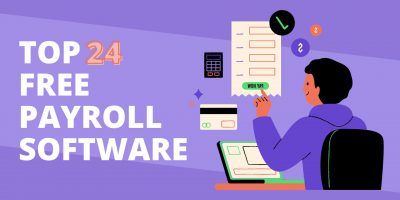
Top 24 Free Payroll Software
Streamline your payroll processes and ensure accuracy with free payroll software solutions.
From manual calculations to fully automated systems, payroll processing has come a long way since its inception centuries ago. The onset of computers and the internet automated the calculation and distribution of employee paychecks, improving efficiency and accuracy.
However, traditional on-premises systems are becoming outdated in the ever-evolving technological landscape. This type of software requires installation and maintenance on local servers, making it less scalable, flexible, and safe for employers.
As a response, a much-needed solution emerged as the latest innovation in the industry – cloud-based payroll, a fully automated way of payroll processing that leverages the power of cloud computing.
What that means and how it revolutionizes the industry is the topic of this Shortlister article, which goes in-depth into analyzing the best cloud-based payroll software vendors, how to choose the right one, and how to implement it in the workplace.



Cloud-based payroll software is a cutting-edge technology that efficiently manages, automates, and monitors employee payments using commercial cloud deployment.
Unlike traditional systems that require installation on individual devices, cloud payroll is a web-based software-as-a-service (SaaS) that can be accessed online. As such, it helps users manage everything online and remotely without app downloads or complicated setups.
The technology allows organizations to store all payroll data, including employee information, tax details, and pay rates, on remote servers maintained by the software provider.
This eliminates the need for businesses to invest in expensive hardware or worry about data backups and security measures. All data on the remote servers is encrypted, ensuring utmost confidentiality and security.
So, all it takes is a stable internet connection, and companies can easily automate anything from onboarding new employees and managing large databases to filing wages and tax forms.
Convenience is one of its many benefits and a valid argument for why employers should consider replacing their traditional system with cloud-based payroll.
Historically, payroll has been a labor-intensive and time-consuming process, prone to errors and compliance risks. However, the rise of cloud technology allowed organizations to streamline these tasks and enjoy various benefits that contribute to cost-savings, improved accuracy and efficiency, better security, and increased flexibility.
Payroll is a complex operation, which is why it’s usually outsourced.
Employers must stay compliant, file wages, withhold taxes, calculate deductions, and report all compensations and contributions correctly and on time. Failure to do this can be costly or destructive for businesses, so their payroll processing must be precise and efficient.
Cloud-based payroll automates most of these functions, allowing for a more effortless and error-free process.
It also simplifies complex tasks and provides real-time visibility into payroll data, eliminating time-consuming and mistake-prone manual calculations.
There are several ways SaaS payroll can reduce unnecessary expenses.
For example, although seemingly inexpensive, in-house payroll processing often involves upfront software installation, hardware infrastructure, and ongoing maintenance costs. On the other hand, errors can be costly, resulting in incorrect paychecks, penalties for compliance, violations, and employee dissatisfaction.
Cloud payroll software eliminates expenses by hosting data on remote servers and providing employers with a pay-as-you-go solution. This doesn’t require costly installments or upgrades and ensures all data is automated, reducing errors, manual labor, and even storage, paper, and printing costs.
Cloud storage is relatively safer than storing data on physical hardware since it can withhold security threats, technology outages, and other natural disasters that can compromise the on-premises server.
Leading payroll software providers invest in robust security measures, including encryption, multi-factor authentication, and rigorous data backups. Since they store information on secure offsite servers, they also ensure that companies won’t lose their data to hardware failure or theft.
The anytime-anywhere access to information is another valuable benefit of SaaS payroll.
Authorized users can securely access the financial software from any device with an internet connection, making it convenient for owners, HR managers, and employees to view and manage payroll information on the go.
That’s a significant advantage for businesses with remote and distributed workforces in different time zones.

Payroll management is a critical function for businesses of all sizes and one they can’t operate without.
Yet, problems with payroll affect 82 million Americans or 54% of the workforce, revealed by the survey Engaging Employees through Payroll. Moreover, 49% of respondents would seek new employment after two payroll mistakes.
With such high stakes, companies must be cautious when choosing the right provider and consider all the key features and potential downsides.
One of the most critical factors in choosing a SaaS payroll is its compliance with all the relevant tax laws and regulations. This includes calculations, filing and reporting requirements, and updates on compliance changes.
Employers should consider their businesses’ size and growth potential before choosing a vendor. That entails payroll software that can accommodate the current needs and handle increased payroll processing as the company expands.
Seamless integration can save time and reduce errors, and most cloud payroll software providers offer it. However, it’s essential to consider the extent of this and whether it integrates with the client’s other software systems, like accounting, benefits administration, or time and attendance tracking systems.
With so many options on the market, finding a provider with features that checks every box is easy. However, budget-wise, many vendors are not transparent about their price plans, which can be costly. Therefore, employers should look out for overpriced solutions or hidden fees.
The software should automate basic payroll tasks like calculating wages, taxes, and deductions, generating pay stubs, and issuing direct deposits and checks.
This is the bare minimum.
Another critical feature is tax management.
It means the software should be able to handle tax-related calculations completely, file payroll tax forms, stay compliant with local, state, and federal taxes, and keep up to date with potential changes in tax laws.
Having a self-service portal can be time efficient.
That way, employees can access their pay stubs, tax forms, and other payroll-related information, reducing the burden on HR or accounting.
Another critical feature of a cloud-based payroll is robust reporting and data analytics. The software should allow users to generate reports quickly, track costs, and gain insights into payroll data.
Payroll data is sensitive and subject to privacy regulations.
Therefore, robust security measures like multi-factor authentications, regular backups, and strong encryption are necessary. Although cloud storage is safer than local storage, employers should only consider reputable and trustworthy payroll providers.
Good customer support is often overlooked, though it’s one of the most important features when using any software. Failure to respond promptly and accurately to time-sensitive inquiries or technical issues can damage a business.
Many payroll vendors don’t fully disclose their pricing.
So, on top of the subscription fee, their service’s total cost can be much higher with additional charges for add-on features, software setup, and implementation.
Payroll is a fundamental aspect of every business. Yet, different companies will have different requirements.
To help employers choose a vendor that aligns with their specific needs and budget, we shortlisted some of the best cloud-based payroll software providers by weighing all the factors and features.
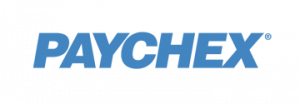
Paychex is one of the leading providers in the industry, with a comprehensive suite of payroll and HR solutions best suited for small to medium-sized businesses. Its cloud-based software is reliable and feature-rich, with fully automated payroll processing features, including salary calculation and distribution, tax compliance and withholdings, and report generation.
For those looking for complete HR experience, Paychex includes time and attendance tracking, benefits administration, employee self-service portals, group health insurance, etc.
|
Best For |
Small to mid-sized employers |
|
Price |
Starting at $39 per month, plus $5 per employee |
|
Free Plan/Trial |
No |
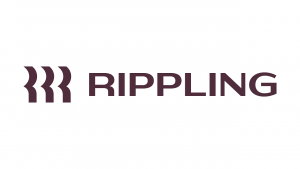
Despite its humble beginnings in 2017 as a Y Combinator company, Rippling is now an all-in-one human resources and payroll provider. Along with payroll processing, the vendor offers HR management features like benefits administration, time and attendance tracking, and onboarding and offboarding for employees.
Rippling is notably user-friendly, with staff that help clients through the setup process. However, its unique selling point is that the software is highly customizable and easily integrated with other tools.
Its simplicity and scalability make it suitable for companies of all sizes, locally and internationally.
|
Best For |
Growing companies |
|
Price |
$8/employee per month |
|
Free Plan/Trial |
No |
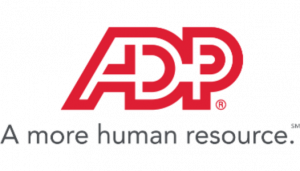
ADP is the company that set the grounds for payroll outsourcing. The industry leader dates to 1949 and, over the decades, kept pace with the newest technological advancements in payroll.
Today, ADP is a cloud-based HCM provider suitable for all company sizes, especially medium-to-large employers. Its ADP Workforce Now HCM solution, with three different subscription plans, covers anything from payroll and tax automation to advanced insights and analytics.
Overall, the most significant advantage of using ADP is that the vendor has comprehensive features under one platform, which is ideal for businesses that need a complete HCM system.
|
Best For |
Large companies |
|
Price |
Starting at $79/month, plus $4 per employee |
|
Free Plan/Trial |
Yes |
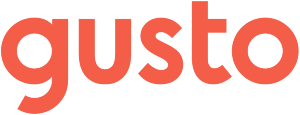
Gusto is an online full-service payroll catering to small businesses and startups, with an intuitive interface that focuses on simplicity and ease of use.
The vendor enables its clients’ workforce with a self-service portal that makes it easier for employees to access their pay stubs and tax forms online. It’s also an excellent choice for employers starting off and wanting to save money and time over hiring HR or accounting professionals since it automates many tasks and comes with a 30-day free trial.
Besides HR management tools and payroll for employees and contractors, the provider facilitates employee benefits like health insurance and 401(k)s.
|
Best For |
Startups |
|
Price |
Starting at $40/month, plus $6 per employee |
|
Free Plan/Trial |
Yes |
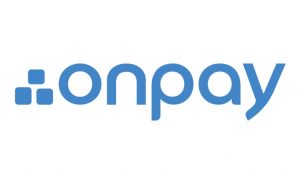
OnPay is a cloud-based payroll software provider best for smaller employers looking to cut costs.
Although its features might not be suitable for growing businesses, that’s not to say that OnPay doesn’t have a comprehensive set of payroll tools. Some include employee self-onboarding and lifetime account access, custom reports, HR features, and integrations for accounting, time tracking, and retirement.
OnPay, like Gusto, offers a 30-day free trial to its customers and is very transparent with its pricing.
|
Best For |
Small employers with up to 100 employees |
|
Price |
Starting at $40/month, plus $6 per employee |
|
Free Plan/Trial |
Yes |
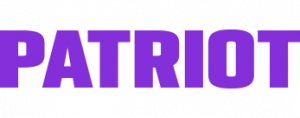
Patriot is another great provider for small businesses and less experienced payroll managers looking for a simpler solution. It comes with self-service portals, unlimited payroll runs, time off tracking, free setup, and more.
Another standout feature of this vendor is its affordability, as it offers competitive pricing plans suitable for businesses on a tight budget and free payroll software for the first 30 days. However, Patriot charges additional fees for some of its services and lacks features that most of the other vendors cover, like Ben Admin or customizable reports.
|
Best For |
Limited-budget employers |
|
Price |
Starting at $17/month, plus $4 per employee/contractor |
|
Free Plan/Trial |
Yes |
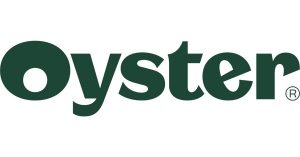
Finally, Oyster is a cloud-based provider focusing on simplicity and compliance, helping small to midsize businesses with their international and local HR processes.
Apart from the general payroll and tax management automation, this vendor provides contractor management features and has a cloud-based global employment platform with time tracking, expense management, and other HR tools. That makes it suitable for organizations that work with freelancers and contractors.
Other advantages are its employer of record (EoR) service for global recruitment, coverage in 180 countries, and the company’s discounts for non-profits and employers who hire refugees.
|
Best For |
Global payroll processing |
|
Price |
Starting at $29 per contractor/month |
|
Free Plan/Trial |
Yes |
After understanding their payroll needs and choosing the best cloud-based payroll software for their business, the next step for employers would be implementing it on an organizational level. However, that requires meticulous planning and execution to ensure a smooth transition.
Before setting up new software that could change how a company operates, employers must create a detailed implementation plan with responsibilities and resources for the second and third steps of the implementation process. In this phase, it’s crucial to prepare the necessary data, including employee information, tax codes, and payroll policies, to be uploaded into the software.
The current payroll provider should have electronic copies of all reports and pay stubs.
The next part is installation, which should be easy with a reliable provider and responsive customer service.
Once installed, the system must be configured according to the organization’s payroll policies and processes. This step entails importing employee data from the previous system to the new cloud payroll software and setting all profiles.
Additionally, a test run would ensure that the software functions are as expected and that all calculations and deductions are accurate.
The last step is to make sure all workers understand the software. This should include comprehensive training for HR, finance, and payroll teams on how to use it effectively.
Once the company is prepared from an organizational and governance perspective, it must consider how cloud migration will affect its employees. Hence, an important and final step of the implementation process is providing proper employee training and support. This is vital to ensure a smooth transition from traditional to SaaS payroll without affecting the company culture.
Here are some of the best practices for training and supporting workers during the implementation process:
For the convenience of SaaS payroll, look at the many case studies of users who revolutionized their workflow with a reliable provider.
One example of how cloud-based payroll cuts down operations time is hiline, an accounting company struggling with its going-all-digital strategy. After migrating to Gusto, the company reduced the time spent on payroll tasks by 50%.
On the other hand, Astute Communications, a small digital agency, found onboarding a real chore and was challenged with remote hiring. After switching to their cloud-based provider, the company automated the onboarding process and reported annual cost savings of $8,000.
Another employer that didn’t want to be geographically constrained in its search for talent is Lokalise, a cloud-based translation management system. By implementing Oyster’s payroll, the business grew with new hires across 45 countries, explaining that the software, “took away the stress and complexity of setting up company entities, figuring out tax regulations and employment laws, and sourcing benefits providers.”
These are just a few of the countless testimonials of clients going on the cloud, explaining how the right software transformed their business.
The bottom line is that cloud-based payroll has emerged as a transformative tool for employers that adopt it. Research conducted by Alight Solutions predicted that 40% of businesses would modernize their payroll systems by 2023. As this number grows, it’s evident that cloud technology is reshaping the payroll landscape and empowering companies of all sizes and industries.
Many employers favor the practicality and convenience of SaaS payroll, and this trend will continue in the following years. According to one research, the global market share for cloud-based payroll in 2021 was more than $10 billion and is expected to reach over $20 billion by 2028.
Seeing how beneficial it can be, now is the right time to implement cloud-based payroll software and stay up to speed with the revolution in payroll systems until the next big thing.
Content Writer at Shortlister
Browse our curated list of vendors to find the best solution for your needs.
Subscribe to our newsletter for the latest trends, expert tips, and workplace insights!

Streamline your payroll processes and ensure accuracy with free payroll software solutions.

Find out why biweekly payments are currently the most popular option in the US.
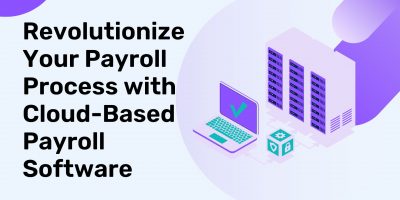
How is cloud-based payroll, a fully automated way of payroll processing that leverages the power of cloud computing, revolutionizing the industry? Analyze the best cloud-based payroll software vendors and learn how to choose the right one and implement it in the workplace.
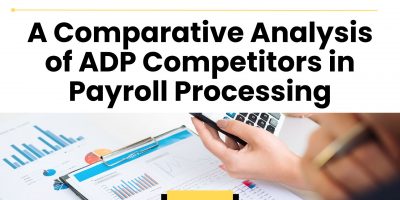
Delve into the analysis of ADP’s payroll processing services and compare them against the biggest ADP competitors.
Used by most of the top employee benefits consultants in the US, Shortlister is where you can find, research and select HR and benefits vendors for your clients.
Shortlister helps you reach your ideal prospects. Claim your free account to control your message and receive employer, consultant and health plan leads.